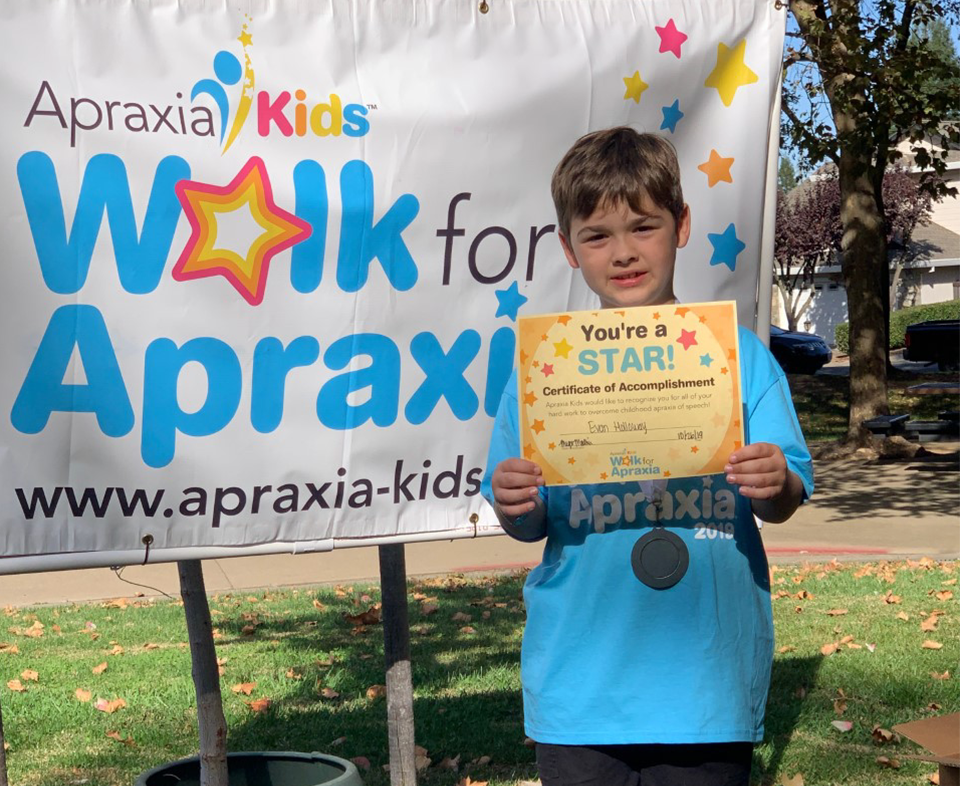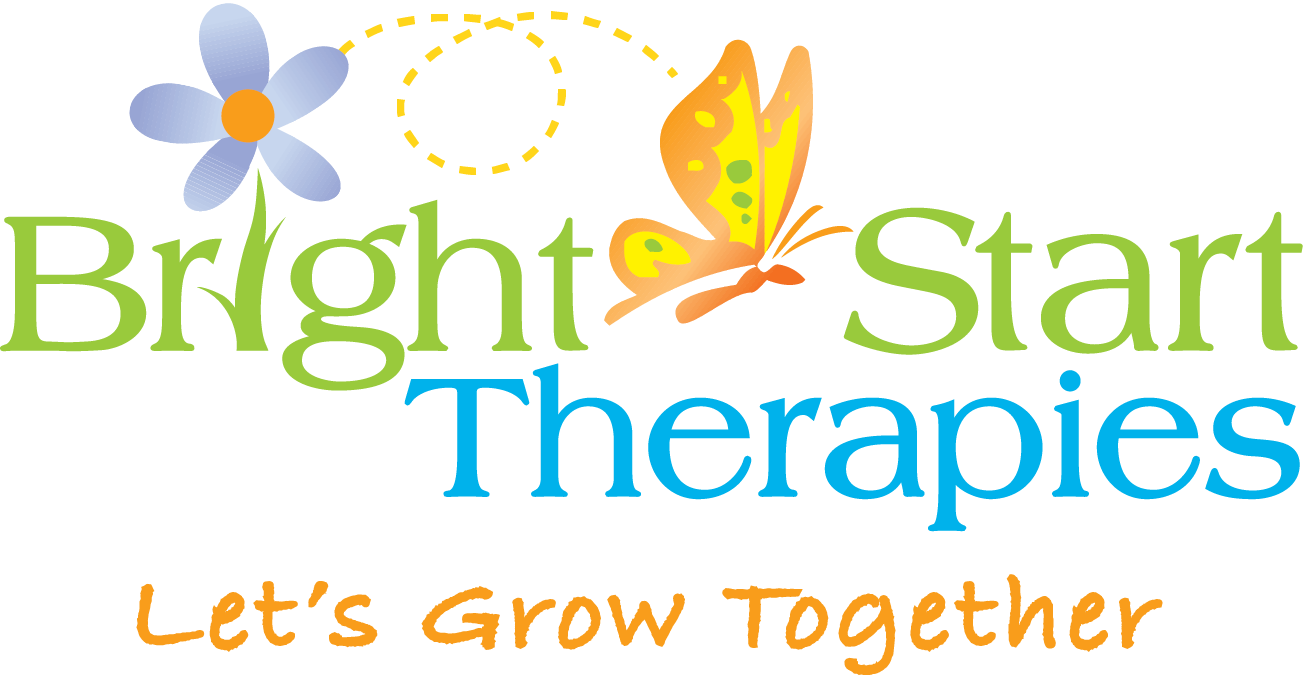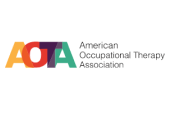What is
Apraxia of Speech?
Childhood apraxia of speech is a type of speech disorder that is present at birth. In order for speech to occur, messages need to go from your brain to your mouth. These messages tell the speech muscles how to move to make sounds and words. Children with CAS might know what they want to say, but have difficulty planning and producing intelligible speech. To speak correctly, your child’s brain has to learn how to make plans that tell his or her speech muscles how to move the lips, jaw and tongue in ways that result in accurate sounds and words spoken with normal rate and rhythm.
why choose us?
We have the training and experience your child needs! Bright Start Therapies has specialized in the assessment and treatment of Childhood Apraxia of Speech (CAS) for over 15 years! Working with children with severe speech disorders is our passion! We have an entire team of therapists who are passionate about CAS. Our Apraxia team members have extensive specialty training and experience in CAS and provide comprehensive evaluations, treatment, consultation and seminars statewide. Motor speech disorders require repetitive planning, programming, and production practice; therefore, intensive and individualized treatment of childhood apraxia is necessary.


Our treatment approach
- The severity of the disorder and the communication needs of the child are important factor. Having an appropriate and thorough evaluation is key to creating a comprehensive treatment plan!
- Motor speech disorders require repetitive planning, programming, and production practice; therefore, intensive and individualized treatment is often necessary.
- A combination of approaches is often necessary. Motor programming, physical cueing including PROMPT, and using augmentative and alternative forms of communication (AAC) are just a few.
- Extensive Parent Training! Apraxia is a motor-based deficit, one of the most important treatment strategies is REPETITION. Therefore, it is very important for families to be an active part of their child’s therapy and be able to incorporate strategies into their daily routines.
Families are given weekly homework with specific targets of sounds with examples of ideas. Weekly consultation of progress on goals as well as collaboration with all professionals working with the child is encouraged, including sharing of information in the entire child’s academic and therapy settings.
Community Involvement Is Very Important!
This involves utilizing as many important people in the child’s life as possible to facilitate carryover and generalization of skills. This includes creating a comprehensive plan tailored to the child’s specific speech capabilities that can provide carryover in many settings including his academic day.

Early signs and symptoms of
Childhood Apraxia of Speech:
- Limited babbling, or variation within babbling
- Feeding difficulties or messy eater
- Slow acquisition of sounds and words
- Simplification of words or simple syllable shapes used to stand for words (partial words used)
- Use of one sound/syllable shape to represent many different things (repetitive use of a sound or syllable shape)
- Difficulty imitating simple sounds and words
- Inconsistent errors (may say the same word different ways)
- Omissions, particularly in word initial syllable shapes (For example, they may pronounce the word “cat” as “at”)
- Vowel errors/distortions (For example, they may produce the word “dad” as “did”)
- Unnatural pauses between sounds or words, speech sounds choppy or robotic
- Loss of previously produced words (may hear a word once and not again and may not be able to repeat it upon request)
- More difficulty with volitional versus automatic speech responses (More difficulty repeating words after you say them instead of when they are said spontaneously)
- Limited phonetic diversity

Comprehensive Evaluations
Our comprehensive assessments are extremely thorough and may include diagnosis or provisional diagnosis of CAS or diagnosis of other speech sound disorders (e.g., articulation and/or phonological) depending on the results. We use more than one therapist on our apraxia team to evaluate each child and use a team approach to analyze the information. Many different assessment tools both formal and informal are used, as well as significant speech sampling to analyze over a period of several sessions. This approach to evaluations ensures the most accurate and dynamic evaluation possible.
WE LOVE TO COLLABORATE!!
Bright Start Therapies Inc. has been providing support services in the CAS community for over a decade. We provide comprehensive IEE assessments for local school districts to rule out or determine the presence of CAS. Our Consultation services include working side by side with school-based therapists to provide direct training on therapy goals, materials, and target selection. We do this to ensure continuity of services in each environment.

frequently asked questions
What is Childhood Apraxia of Speech?
Childhood Apraxia of Speech (CAS) is a neurologically-based motor speech disorder. Children with CAS have difficulty producing speech sounds in the absence of muscle weakness or paralysis. Though a child with CAS knows what he/she wants to say, impairments in planning and/or coordinating lip, tongue, and jaw movement results in speech sound errors and differences in prosody (patterns of stress and intonation).
How is CAS different from other types of speech disorders?
Some speech sound disorders often get confused with CAS because some of the characteristics are the same. These speech sound disorders include articulation disorders, phonological disorders and dysarthria. A child who has trouble learning how to make specific sounds, but doesn't have trouble planning or coordinating the movements to speak, may have an articulation or phonological disorder. Articulation and phonological disorders are more common than CAS.
How common is CAS?
CAS is uncommon, occurring in 1-2 children per 1,000. It affects more boys than girls and occurs more frequently in children with Autism and Down syndrome.
What is the cause of Childhood Apraxia of Speech?
The cause of CAS is yet unknown. While some researchers believe that CAS is a disorder related to overall language development, others believe it is neurologically based and that it disrupts the brain’s ability to send signals to move muscles involved in speech production. Recent research also suggests a genetic component to this disorder, as children with CAS often have family members with a history of communication disorders or learning disabilities.
Can my child have another disorder such as Down syndrome or ASD and have CAS?
Yes, a child may have multiple disorders including CAS. Each disorder is independent of the other. A three-year study, published in the Journal of Developmental and Behavioral Pediatrics, showed that nearly two-thirds of children initially diagnosed with autism also had apraxia.
What can parents and caregivers do to help?
As a parent of a child with CAS, you play an important role in your child’s success. By creating a home environment that promotes positive interactions with communication and educating all family members who interact with the child is key to success! In order to improve motor planning, your child will need to practice speech often. It is essential that all of your child’s caregivers, therapists, and teachers are involved in the treatment process.
How do you diagnosis CAS?
No single test is adequate for the diagnosis CAS. CAS should be evaluated by a licensed speech therapist who has both specific training and experience in CAS. Both formal and informal testing measures are used as well as well documented speech samples that are analyzed to determine the presence of CAS.
What are the top three features of CAS?
1. Inconsistent errors on consonants and vowels in repeated productions of syllables or words.
2. Lengthened and disrupted coarticulatory transitions between sounds and syllables.
3. Inappropriate prosody, especially in the realization of lexical or phrasal stress.
Will my child with CAS improve?
Childhood Apraxia of Speech Does Get Better! It’s important to remember that no two kids are alike and neither will be their journey in gaining speech, but they will all make progress. Just knowing that your child can and will improve is important! Factors that may affect the amount of therapy needed include: determination/motivation, overall intelligence, therapy time, home practice, and co-occurring disorders like AD/HD, Autism, and Down syndrome.
What does Therapy look like for CAS?
Children with CAS receive frequent and intensive one-on-one therapy, tailored to their specific speech and language needs. Treatment focuses on improving speech imitation skills, speech-based motor sequences, length and complexity of producible syllable patterns, teaching rules of speech sound patterns, and, in some cases, using augmentative communication systems (e.g., picture exchange communication system).
Is my child with CAS at-risk for other speech and language disorders?
Children with all types of speech disorders including CAS are at risk for other delayed language development: a child who has trouble forming sounds and words may have trouble forming phrases and sentences for language. Expressive language problems, such as word order confusion and grammatical errors. Occurring language and literacy including: problems learning to read, spell, and write; and all areas of phonological awareness problems with social language/pragmatic language
What are some other disorders that can be associated with CAS?
Any of the following:
- ADHD/ADD
- ASD
- Attention Processing Disorder
- Cognitive Impairment/Intellectual Disability
- Craniofacial issues
- Developmental Coordination Disorder/Dyspraxia
- Developmental/cognitive delay
- Down syndrome
- Dysarthria
- Emotional Behavior Disorder/Oppositional Defiant Disorder
- Executive Functioning
- Expressive language disorder
- Feeding problems
- Genetic abnormalities
- GI issues
- Hearing problems
- Language Impairment
- Learning Disability/Specific Learning Disability/Dyslexia/Reading Disorders
- Neurologic problems (including abnormal MRI)
- Other speech issues
- Psychiatric/behavioral disorders
- Receptive language disorder
- Sensory Processing Disorder/Sensory Integration Disorder
- Speech Sound Disorders
- Visual problems
Every Child Deserves a Voice
Resources in Childhood Apraxia of Speech
(CAS)
Apraxia Web Sources
Apraxia Books
- The Mouth With a Mind of Its Own Paperback - by: Patricia L. Mervine
- What your friend with apraxia wants you to know - by: Laura Bruno
- The Boy Who Couldn't Speak, Yet (Jordan's World) Paperback - by: Jordan Christian Levan
- Overcoming Apraxia Paperback - by Laura Baskall Smith
- Billy Gets Talking: A Preschooler's Journey Overcoming Childhood Apraxia of Speech Paperback - by: Mehreen Kakwan
Apraxia YouTube
- Examples of different levels of severity in Childhood Apraxia of Speech (CAS)- Mayo Clinic
- Definitions and Descriptions of Childhood Apraxia of Speech (CAS) Mayo Clinic
- Childhood Apraxia of Speech 101 -Apraxia Kids
- Does Your Child Have Apraxia of Speech -KGYN9
- Understanding Childhood Apraxia of Speech- Bundoo
Apraxia Apps











